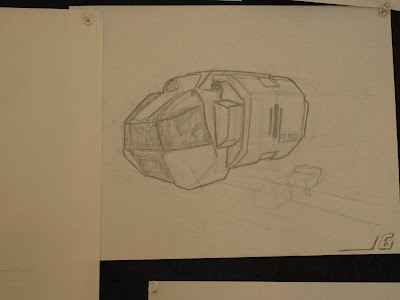Here is Clayton and My final Materials and Processes presentation:
[click to enlarge images]
[click to enlarge images]
Öliblock
different amorphous blocks that are kinda cool that feature
magnets and friction fit
joints that kids can put together to build ambiguous structures.
The problem was to come up with a building block product tha
t the company could market that would use a similar language, but have more linear forms.
Having talked to a friend of mine (a mother with five kids) we came to the opinion that the blocks were boring, a little too ambiguous to hold the attention of
young kids. Though they had ample construction capabilities (the "logic") the lacked any other interesting or useful qualities. Also, the friction fit joints were difficult for small children to assemble and disassemble.
note: by "explotation" i definitely meant "exploration." I fixed it in the presentation, but I guess this is a slightly older vertion, lol
note: by "explotation" i definitely meant "exploration." I fixed it in the presentation, but I guess this is a slightly older vertion, lol
Here are some process shots and a concept map of our ideas
We decided to go with a customizable night light for a couple of reasons. First, it gave us the oppurtunity to work with lights and circuitry. We thought that  the opportunity for a light to glow every time two things were connected would provide for a certain wonder in children, and an opportunity for them to experiment and learn.
the opportunity for a light to glow every time two things were connected would provide for a certain wonder in children, and an opportunity for them to experiment and learn.
 the opportunity for a light to glow every time two things were connected would provide for a certain wonder in children, and an opportunity for them to experiment and learn.
the opportunity for a light to glow every time two things were connected would provide for a certain wonder in children, and an opportunity for them to experiment and learn. We also liked how a night-light gives a child comfort in his darkest hour (hehe) and believe that a personal connection through a customizable light source may play upon these ideas.
Also, we think LEDs and circuits are cool.
 The blocks themselves are three sided. There is a male end, a female end, and a magnet. In order for the piece to be injection molded, the actual interlocking pieces are made separately (investment molded steal) and put in the machine with the LEDs so that the EVA (Ethylene Vinyl Acetate) can be molded around them.
The blocks themselves are three sided. There is a male end, a female end, and a magnet. In order for the piece to be injection molded, the actual interlocking pieces are made separately (investment molded steal) and put in the machine with the LEDs so that the EVA (Ethylene Vinyl Acetate) can be molded around them.Also, the use of metal on the ends allows complete circuits to be made when pieces are connected together. The pieces can be joined (male-female) by putting together and twisting 90 degrees.
EVA is a recyclable, environmentally clean and safe material that can be molded like plastic. It is safe enough to be used around food products, making it preferable to the PVC (polyvinyl chloride) used to make öliblock toys now. It is also cheaper than PVC. In this case, it will be clouded translucent and colored.
EVA is a recyclable, environmentally clean and safe material that can be molded like plastic. It is safe enough to be used around food products, making it preferable to the PVC (polyvinyl chloride) used to make öliblock toys now. It is also cheaper than PVC. In this case, it will be clouded translucent and colored.
 The blocks get their power from a battery powered base structure that has three magnet connections (allowing it to connect to any of the three possible sides of the blocks). The low currency of the device means it is safe for kids, and emits a low glow, perfect for a night-light.
The blocks get their power from a battery powered base structure that has three magnet connections (allowing it to connect to any of the three possible sides of the blocks). The low currency of the device means it is safe for kids, and emits a low glow, perfect for a night-light. Pieces are stored on this base by placing the magnet end of the piece toward the center where it will attract to one of the two angled metal pieces. This arranges the pieces in a circular formation (we call it the shrimp cocktail formation) for storage and shipping.
drastically reduce) the amount of waste from packaging. Most toys, these days, come in cardboard or plastic packaging that lasts only as long as the car ride home. By incorporating the base, packaging, and container, we can eliminate the package waste that the current öliblock product line creates.
There are more slides that have material information as well as orthographic views, but Clayton has those. Maybe I'll upload them later, but probably not.
Just know that they are made of LEDs, injection molded EVA, and investment cast steal.
-kyle
PS:
Designed this toy and made this presentation start-to-finish in three days
PS:
Designed this toy and made this presentation start-to-finish in three days

















